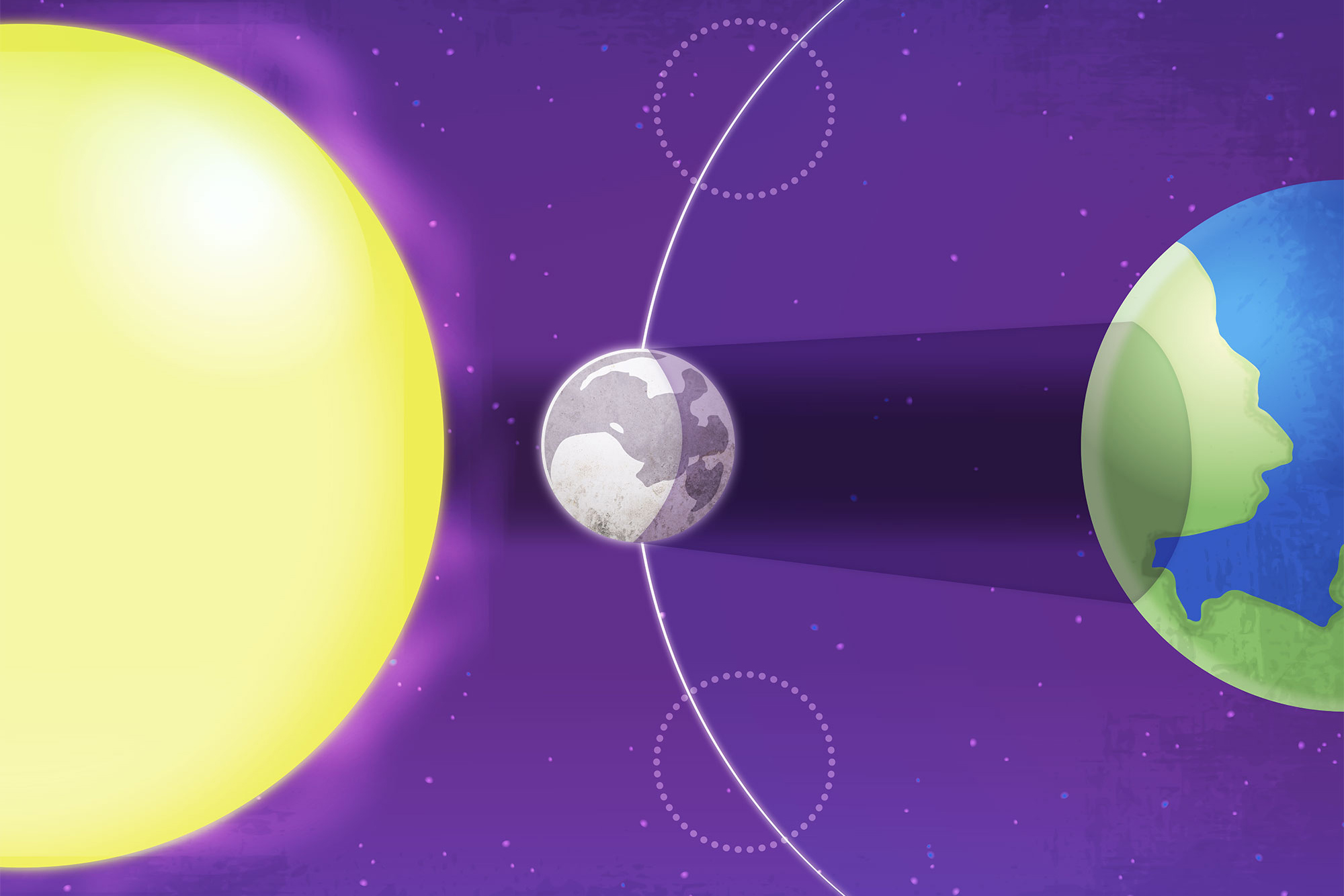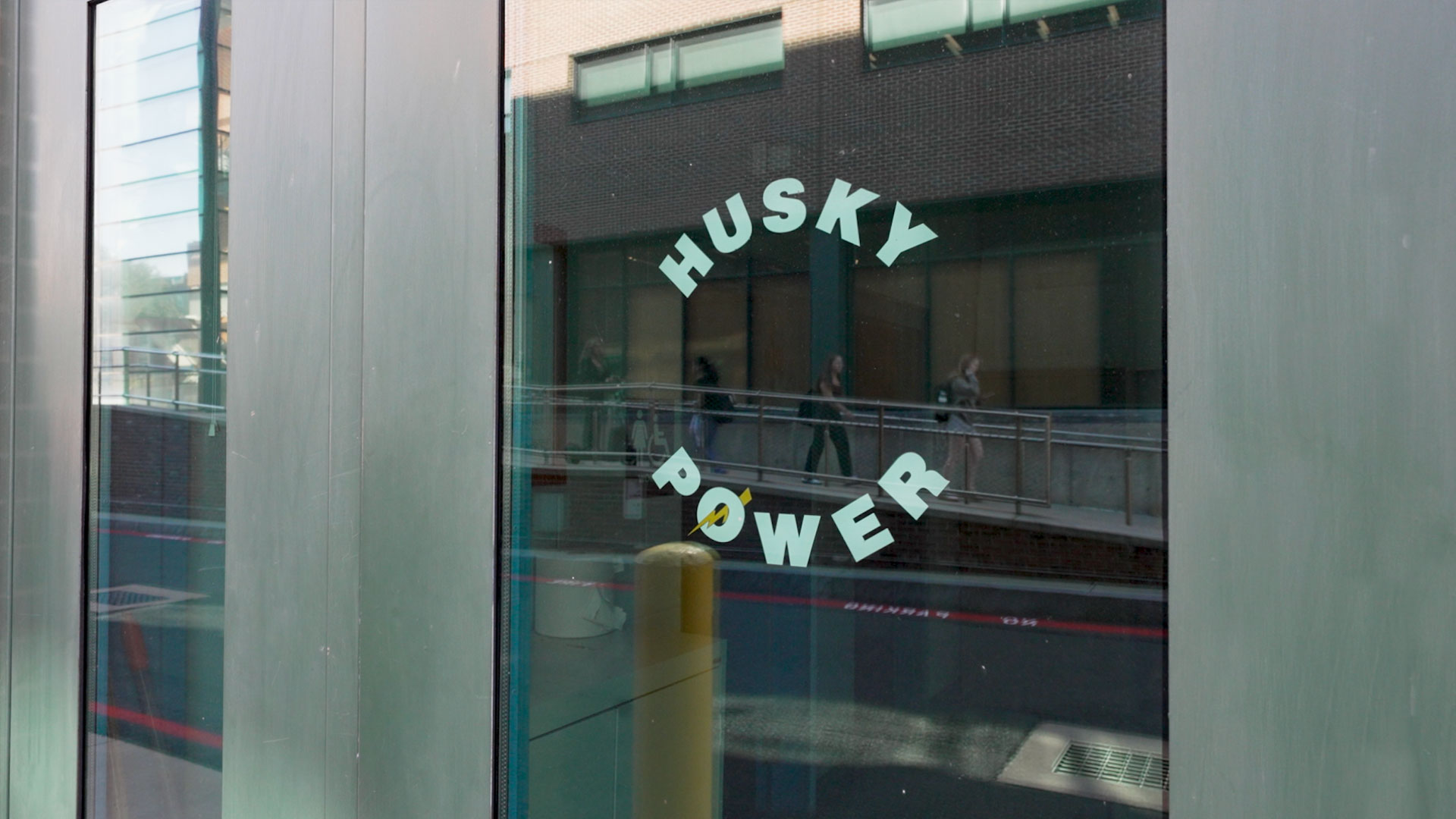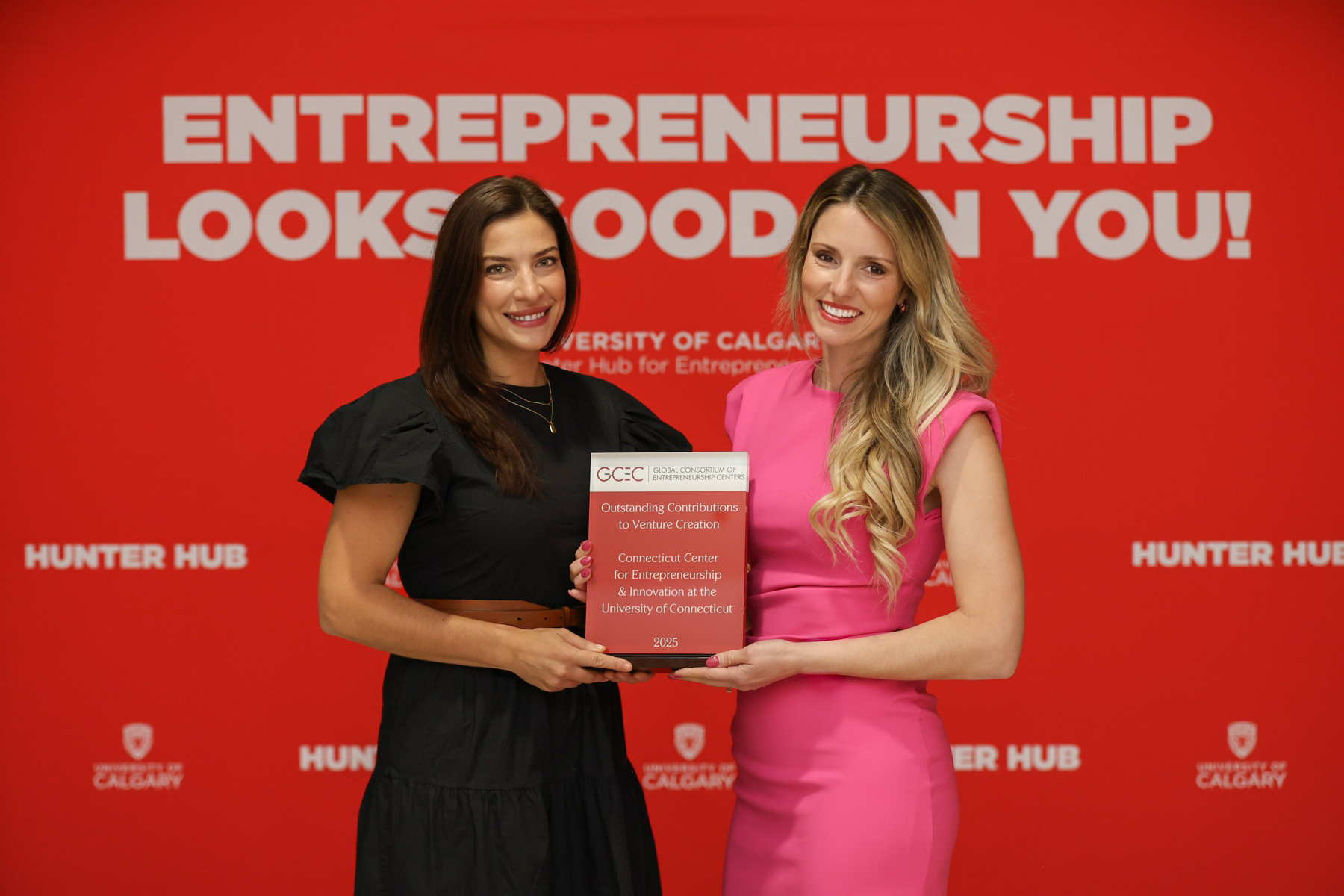A spectacular and likely unforgettable show will take place in the sky Aug. 21.
“Have you ever seen a total solar eclipse?” asks Cynthia Peterson, professor emerita of physics. “It’s a really, really exciting event!”
The reason she and so many others are excited for this event has a lot to do with its rarity. The last time a total solar eclipse was visible from the mainland United States was 38 years ago, in February 1979.
Very specific conditions have to be met to create an eclipse that can be viewed from Earth. The Earth and the moon must align perfectly with the sun as they speed through space, an amazing coincidence. To fully understand how this happens, Peterson says, it’s helpful to know some basic astronomy.
Conditions for a Total Solar Eclipse

The Earth moves in space around the sun, completing a full orbit once every 365.25 days, she explains. As the Earth and other members of our solar system travel around the sun, they continue in essentially the same plane, on a path called the ecliptic. Some celestial bodies, such as our moon, deviate from the ecliptic slightly.
The orbit of the moon is inclined on the ecliptic plane at an inclination of 5 degrees. As the moon deviates 5 degrees above or below the ecliptic plane, it will cross the plane at points called nodes.
“That is the first essential piece of the eclipse puzzle,” says Peterson. “The moon must be at a node for an eclipse to occur. Otherwise, the moon will not align and no eclipse will be seen from Earth.”
The moon’s position in the lunar cycle is another vital eclipse component. As the Earth travels in its orbit, the moon tags along, keeping its gaze locked on Earth, always facing from the same side as it completes its own orbit around Earth once every 29.5 days. Over the course of a month, the moon’s appearance changes, from crescent to full to crescent again and finally to what appears to be its absence, when it’s called a new moon. A new moon is the other requirement for a solar eclipse.
“The basic rule for a solar eclipse is to have a new moon at a node,” Peterson points out.

But during an eclipse, how can our moon, which is relatively small, appear almost as big as the sun, which is pretty gigantic?
Peterson explains, “The sun is 400 times bigger than the moon and the sun is also 400 times farther away from the moon, so the moon appears to fit exactly during an eclipse, when they are both the same angular size.”
Holding up her fist, she demonstrates: “Find a large object ahead of you and pretend it is the sun and your fist is the moon. If you hold up your fist and look with one eye, you can’t see the object/sun.”
These are the conditions for a total solar eclipse like the one coming up. “Solar eclipses happen when the new moon obstructs the sun and the moon’s shadow falls on the earth, creating a total solar eclipse.” Peterson moves her fist slightly away from herself until the edges of the object can be seen around it. “Or, when the moon covers the Sun’s center and creates a ‘ring of fire’ around the moon, it’s what’s called an annular eclipse.”
It’s those bits of the sun peeking out from behind the moon – in both partial and total eclipses – that everyone needs to be careful of. It’s extremely important to view the eclipse safely, Peterson stresses. “The problem with the eclipse is that every time it happens, some people are blinded [from looking at it unprotected]. The shadow goes whipping by at 1,000 miles per hour, and you never want to stare at the sun, even a sliver of it.”
So be prepared, and ensure you wear proper solar eclipse eye protection. Regular sunglasses will not help. Solar eclipse glasses can be used, welder’s goggles, or telescopes with proper lenses. Be sure the eye protection you choose is certified by the International Organization for Standardization (ISO). Other popular viewing methods are DIY viewing boxes like these.
Peterson, like many others who wish to get the full eclipse experience, will be traveling to an area directly in the path of the eclipse’s shadow. These areas are called totality. The Aug. 21 eclipse will cover an expansive area of totality that will include 14 states and 14 major U.S. cities, stretching from Lincoln Beach, Oregon to Charleston, South Carolina. For a map of the path of totality, go to the NASA website. Connecticut is unfortunately hours of travel from the nearest totality. Peterson will go as far as Nebraska for the experience.
“You’ll only see a partial eclipse here in Connecticut,” she says. “It will get a little darker, like a cloud covering part of the sun, and then brighten up again.”

She encourages those who can to try to travel to a viewing point for the total eclipse, where they may see “amazing phenomena” like the diamond ring, shadowbands, crescent-shaped solar images under trees (instead of the usual ‘coins’ which are pinhole images of the sun), and extremely sharp shadows in the final minute before totality, due to the very narrow sun at that time. “These phenomena can only be seen in totality,” she says.
The next chance to see a total solar eclipse will be in 2024, when its shadow will be cast closer to Connecticut. It will start in the U.S. in Texas, then make its way north, through northern Vermont and New Hampshire.
“That’s less than seven years from now,” Peterson points out, “but that’s the end of eclipses crossing the U.S. until the 2050s.”
For those on campus next week, you aren’t out of luck. For this eclipse there will be a viewing party on Horsebarn Hill behind the Dairy Bar, from 1 to 4 p.m., hosted by the Department of Physics. “We’ll have solar telescopes, a pinhole camera activity, and will do some short mini-lectures on astronomy at UConn and about how eclipses work,” says assistant professor of physics Jonathan Trump, one of the faculty members who will lead the viewing party.
Peterson, longtime astronomer and scientist, says witnessing an eclipse – especially a total eclipse – can be extremely emotional. She suggests reading Annie Dillard’s essay about solar eclipses, where the author compares the contrast between viewing a partial eclipse and viewing a total eclipse to the difference between flying in an airplane versus falling out of the airplane. “Those are very different experiences.”
But wherever you are on the afternoon of Aug. 21, Peterson says, stop and enjoy the show: “Good luck and clear skies!”
The eclipse will be live-streamed by NASA, and can also be viewed on PBS’ NOVA at 9 p.m. on Aug. 21.



